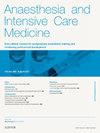姑息治疗中的疼痛管理:艺术还是科学
IF 0.3
Q4 ANESTHESIOLOGY
引用次数: 0
摘要
姑息治疗中的疼痛管理既是一门艺术也是一门科学。良好的疼痛控制至关重要的是,不仅要了解疼痛起源的病理生理学,还要了解疼痛所产生的影响,因为姑息治疗患者可能不得不带着疾病的症状生活数月甚至数年。干预可以在不同的时间有针对性地进行,可能包括一系列药物治疗,心理或精神支持,可能还包括其他专业的参与,以缓解特定的问题。本文章由计算机程序翻译,如有差异,请以英文原文为准。
Pain management in palliative care: art or science
Pain management in palliative care is both an art and a science. Essential to good pain control is an understanding not only of the pathophysiology of the origin of the pain, but also the impact that the pain is having, as the palliative patient may have to live with the symptoms of disease for months or even years. Interventions can then be targeted and at various times, may include a range of pharmacological treatments, psychological or spiritual support and possibly the involvement of other specialties to alleviate a particular problem.
求助全文
通过发布文献求助,成功后即可免费获取论文全文。
去求助
来源期刊

Anaesthesia and Intensive Care Medicine
ANESTHESIOLOGY-
CiteScore
0.50
自引率
0.00%
发文量
152
期刊介绍:
Anaesthesia and Intensive Care Medicine, an invaluable source of up-to-date information, with the curriculum of both the Primary and Final FRCA examinations covered over a three-year cycle. Published monthly this ever-updating text book will be an invaluable source for both trainee and experienced anaesthetists. The enthusiastic editorial board, under the guidance of two eminent and experienced series editors, ensures Anaesthesia and Intensive Care Medicine covers all the key topics in a comprehensive and authoritative manner. Articles now include learning objectives and eash issue features MCQs, facilitating self-directed learning and enabling readers at all levels to test their knowledge. Each issue is divided between basic scientific and clinical sections. The basic science articles include anatomy, physiology, pharmacology, physics and clinical measurement, while the clinical sections cover anaesthetic agents and techniques, assessment and perioperative management. Further sections cover audit, trials, statistics, ethical and legal medicine, and the management of acute and chronic pain.
 求助内容:
求助内容: 应助结果提醒方式:
应助结果提醒方式:


